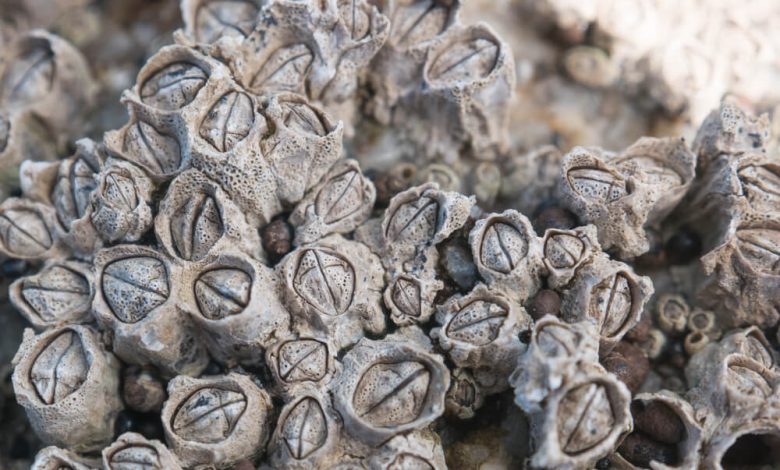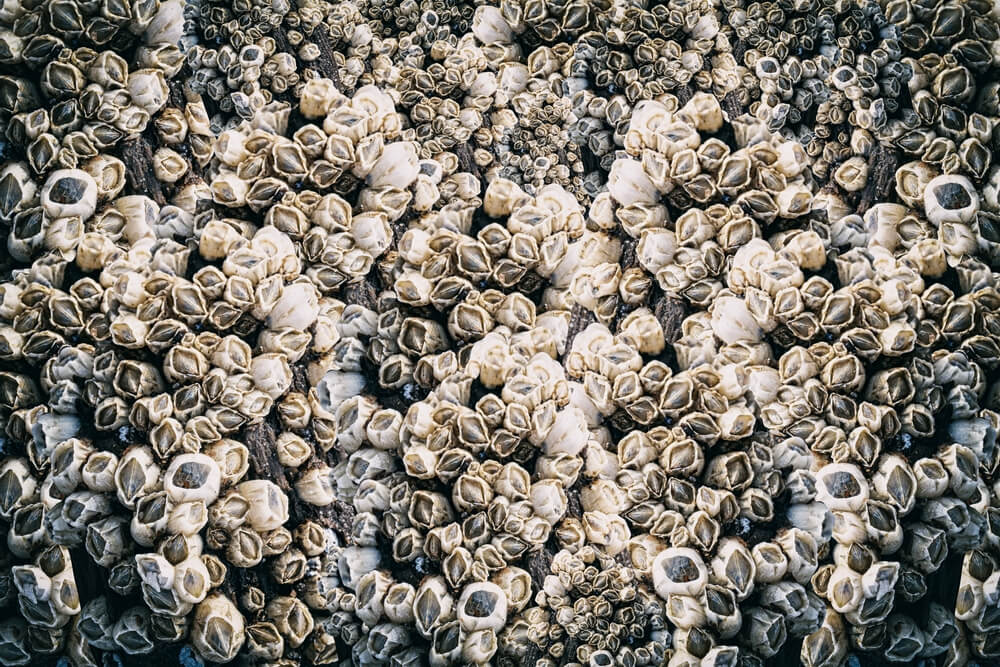What Are Barnacles? An In-Depth Guide to These Fascinating Marine Creatures

Barnacles are fascinating creatures that often pique the curiosity of marine enthusiasts and biologists alike. But what exactly are barnacles? By definition, barnacles are a type of crustacean belonging to the subclass Cirripedia. These small, hard-shelled organisms are commonly found attached to submerged surfaces such as rocks, ship hulls, and even the skin of whales.
In marine biology, barnacles hold a unique place due to their intriguing lifestyle. Unlike most crustaceans that move freely in water, adult barnacles remain stationary for life after finding a suitable surface during their larval stage. They secrete a strong adhesive substance that cements them in place, allowing them to withstand strong ocean currents.
Barnacles feed by extending feathery appendages called cirri into the water to capture plankton and other microscopic food particles. This filter-feeding mechanism is highly efficient and enables them to thrive in various marine environments.
Understanding these resilient creatures provides valuable insights into marine ecosystems and the complex interactions within them. Barnacles may seem simple at first glance, but their unique adaptations make them an integral part of oceanic biodiversity.
The Life Cycle of Barnacles
Barnacles, fascinating creatures of the marine world, undergo a complex life cycle that begins with barnacle larvae and culminates in adulthood. Understanding the life stages of barnacles provides insight into their unique reproductive strategies and survival mechanisms.
The journey starts with barnacle reproduction, where adult barnacles release eggs and sperm into the water. Fertilized eggs develop into free-swimming larvae known as nauplii. These microscopic larvae drift with ocean currents for several weeks, feeding on plankton to grow and develop.
As they progress through their larval stages, nauplii eventually transform into cyprid larvae. This stage is crucial for their survival; cyprids do not feed but instead search for a suitable surface to attach themselves. Using specialized adhesive glands, they secure themselves to substrates like rocks, ship hulls, or even other marine animals.
Once attached, the metamorphosis from larva to adult begins. The cyprid sheds its outer shell and develops a hard calcareous exoskeleton characteristic of adult barnacles. Over time, these adults will contribute to the next generation by releasing their own gametes into the water column.
This intricate life cycle highlights how barnacles have adapted to thrive in diverse marine environments. From drifting larvae to steadfast adults, each stage plays a vital role in maintaining the continuity of these remarkable organisms within marine ecosystems.
Biodiversity – Different Types of Barnacles Found in the Ocean
Barnacles are fascinating marine organisms that play a significant role in the ocean’s biodiversity. These crustaceans are known for their unique ability to attach themselves permanently to various surfaces, including rocks, ship hulls, and even other marine animals. There are several types of barnacles found in the ocean, each contributing to the intricate web of marine species diversity.
One common type is the acorn barnacle (Balanus spp.), which is easily recognizable by its cone-shaped shell. Acorn barnacles adhere to hard substrates and are often found in intertidal zones where they endure fluctuating tides and wave action. Their robust structure helps them withstand these harsh conditions while filtering plankton from the water for nourishment.
Another intriguing type is the goose barnacle (Lepas spp.), named for its long, flexible stalk that resembles a goose’s neck. Goose barnacles typically attach themselves to floating objects like driftwood or debris carried by ocean currents. This mobility allows them to spread across vast distances, thus playing a crucial role in dispersing marine species diversity.
Understanding these different types of barnacles not only highlights their adaptability but also underscores their importance in maintaining healthy marine ecosystems. By studying these organisms, scientists can gain insights into broader ecological patterns and processes that sustain life beneath the waves.
The Role of Barnacles in Marine Ecosystems

Barnacles play a crucial role in marine ecosystems, contributing significantly to the balance and health of their environments. As filter feeders, barnacles help maintain water quality by filtering out plankton and other small particles from the water. This feeding activity not only sustains the barnacles but also benefits the broader marine food webs by controlling plankton populations and promoting nutrient cycling.
Barnacles also engage in symbiotic relationships with various marine species. For instance, they often attach themselves to whales, turtles, and even ships, where they find a stable surface to grow on while causing minimal harm to their hosts. These relationships can sometimes be mutualistic; for example, barnacles can provide additional camouflage or protection to their hosts.
Furthermore, barnacle shells create microhabitats for other small organisms such as algae, mollusks, and crustaceans. These microhabitats contribute to biodiversity by offering shelter and resources for these species. Thus, understanding the barnacle ecosystem role is essential for appreciating how these small yet significant creatures support marine life intricately woven into complex ecological networks.
Economic and Environmental Impact of Barnacles on Human Activity
Barnacle fouling, the accumulation of barnacles on submerged surfaces, poses significant economic and environmental challenges. The economic impact of barnacles on ships is particularly notable. Barnacle growth increases the frictional resistance of ship hulls, leading to higher fuel consumption and operational costs. Studies estimate that heavy barnacle fouling can increase fuel usage by as much as 40%, translating to millions of dollars in additional expenses for shipping companies annually.
Beyond the financial burden, the environmental effects of barnacle growth on man-made structures are also concerning. Barnacles can damage underwater infrastructure such as piers, oil rigs, and seawalls by creating points of weakness where corrosion and other forms of degradation can take hold. This not only compromises structural integrity but also necessitates frequent maintenance and repair efforts, further adding to costs.
Moreover, managing barnacle fouling often involves antifouling paints or coatings containing biocides that can leach into marine environments, potentially harming aquatic ecosystems. As a result, there is a growing interest in developing eco-friendly antifouling solutions that minimize both economic losses and environmental impact while effectively controlling barnacle populations on human-made structures.
Methods for Managing and Removing Unwanted Barnacle Growths
Barnacle growth on boats and ships can significantly impact performance and fuel efficiency. Understanding effective barnacle removal techniques and anti-fouling measures is crucial for maintaining vessel integrity and operational costs.
One common method for managing barnacle growth is manual scraping, which involves physically removing the barnacles from the hull. This technique, while labor-intensive, ensures immediate removal of the organisms. However, it’s essential to use appropriate tools to avoid damaging the boat’s surface.
Chemical treatments are another popular approach. These involve applying specialized solutions that dissolve or loosen barnacles, making them easier to remove. It’s important to choose environmentally-friendly products to minimize ecological impact.
Anti-fouling paints are a proactive measure used by many boat owners and maritime operators. These paints contain biocides that prevent barnacles from adhering to the hull in the first place. Regular application of anti-fouling paint can significantly reduce maintenance efforts over time.
Ultrasonic systems represent a more advanced technology in controlling barnacle populations. These devices emit ultrasonic waves that deter marine life from attaching to the hull without harming them or causing environmental damage.
Understanding these various methods enables boat owners and operators to select the most effective strategies tailored to their specific needs, ensuring smoother sailing and reduced maintenance costs in the long run.
Appreciating the Complex World of Barnacles and Their Importance to Marine Life
Barnacles, often overlooked due to their small size and unassuming appearance, play a crucial role in marine ecosystems. These fascinating crustaceans serve as bioindicators, providing valuable insights into the health of marine environments. By attaching themselves to various surfaces, including rocks, ship hulls, and even other animals like whales and turtles, barnacles contribute significantly to the biodiversity of their habitats.
Their presence can indicate water quality and environmental changes, making them essential for scientific studies related to climate change and pollution. Moreover, barnacles form symbiotic relationships with many marine species. For instance, they offer protection to certain fish species by providing shelter within their clusters.
In addition to their ecological importance, barnacles have also inspired advancements in technology. The unique adhesive properties of barnacle cement are being studied for potential applications in medical adhesives and underwater construction.
Understanding the complex world of barnacles not only enriches our knowledge of marine life but also underscores the interconnectedness of all living organisms within an ecosystem. By appreciating these small yet significant creatures, we can foster greater awareness and conservation efforts aimed at preserving our oceans’ health for future generations.
